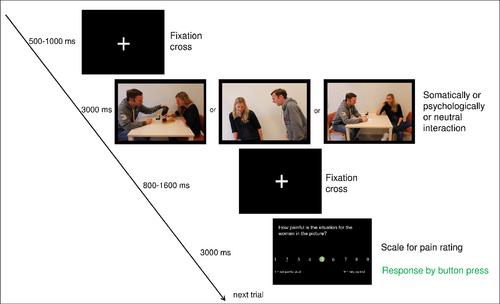Is your pain my pain? A study exploring the relation between pain sensitivity, pain thresholds and empathy for somatic and psychological pain
Abstract
Objectives
Research has shown that empathy for both somatic and psychological pain recruits affective components of the so-called pain matrix, a set of brain regions that is activated during the perception of somatic pain. In addition, the subjective evaluation of experimentally induced somatic pain is related to empathy for somatic pain. In contrast, it is unclear whether or not the subjective sensitivity to somatic pain impacts on empathy for psychological pain.
Methods
In the present study, 55 healthy participants conducted a pain-pressure-test (PPT) and a cold-pressor test (CPT) in order to assess pain thresholds, pain tolerance and evaluation of pain during the task. They further conducted the social interaction empathy task (SIET), which investigates empathy for somatic as well as psychological pain. All participants completed the interpersonal-reactivity index (IRI) and the pain-sensitivity questionnaire (PSQ).
Results
Participants who are in general more sensitive to somatic pain, as indicated by high-PSQ scores, showed higher empathy, that is, higher pain ratings, for both somatic and psychological painful situations observed in others as compared to those with low-PSQ scores. High-PSQ scores and high pain and unpleasantness ratings during the CPT were correlated with empathy for pain (both pain conditions), whereas pain thresholds (PPT) and pain tolerance thresholds (CPT) did not correlate with empathy. The IRI subscore ‘personal distress’ correlated with psychological pain ratings.
Conclusions
Thus, empathy for both somatic and psychological pain were related to the subjective evaluation of somatic pain and general pain sensitivity.

 求助内容:
求助内容: 应助结果提醒方式:
应助结果提醒方式:


